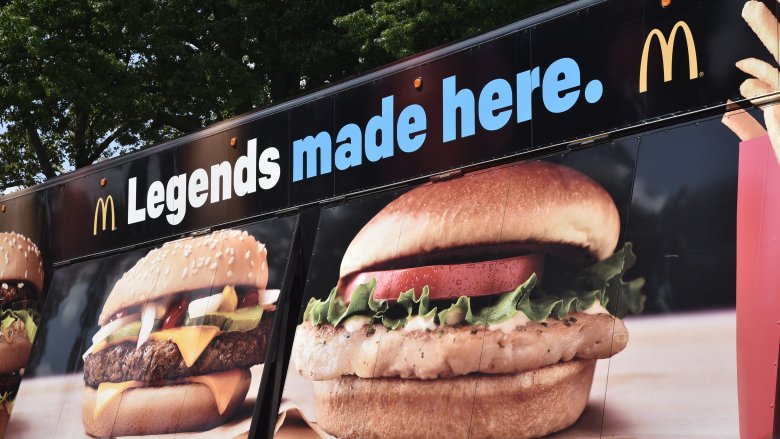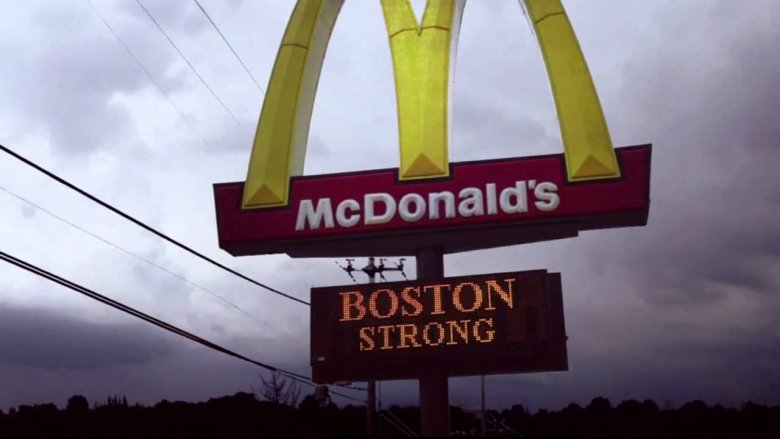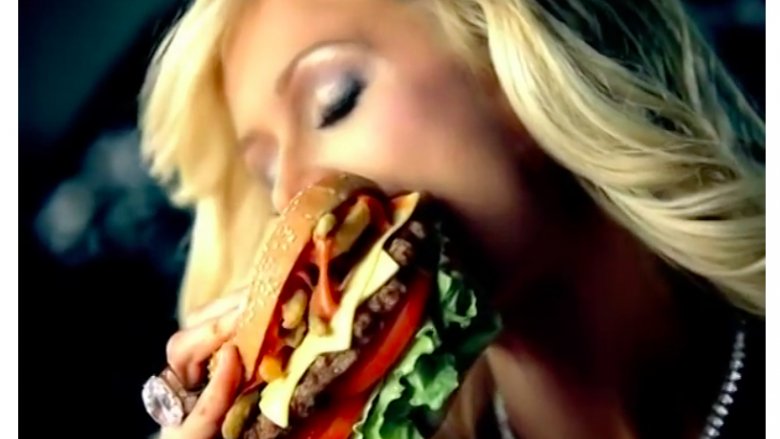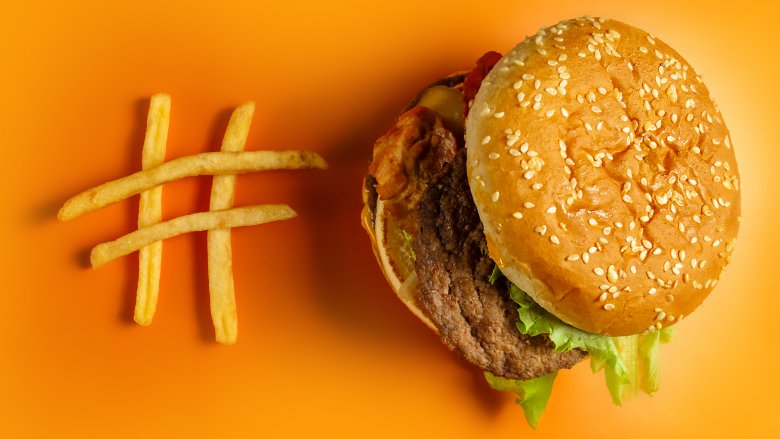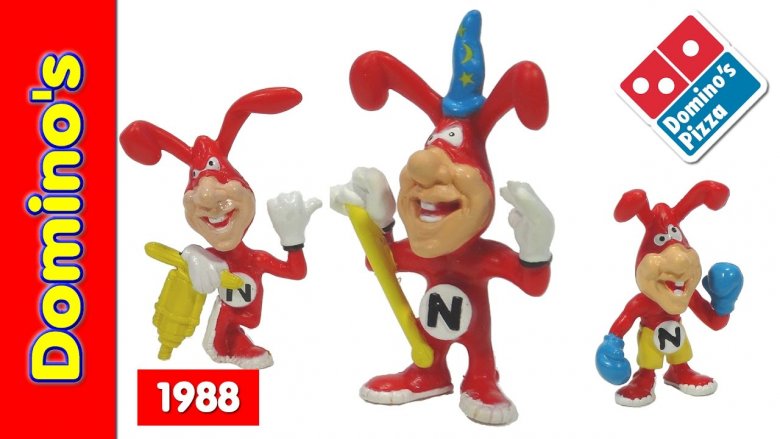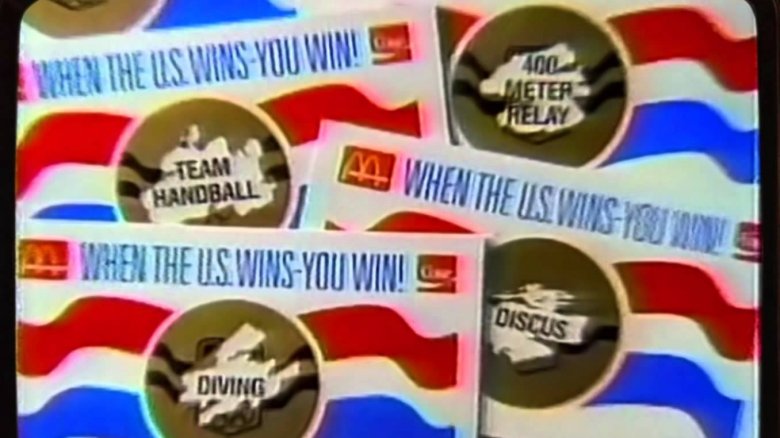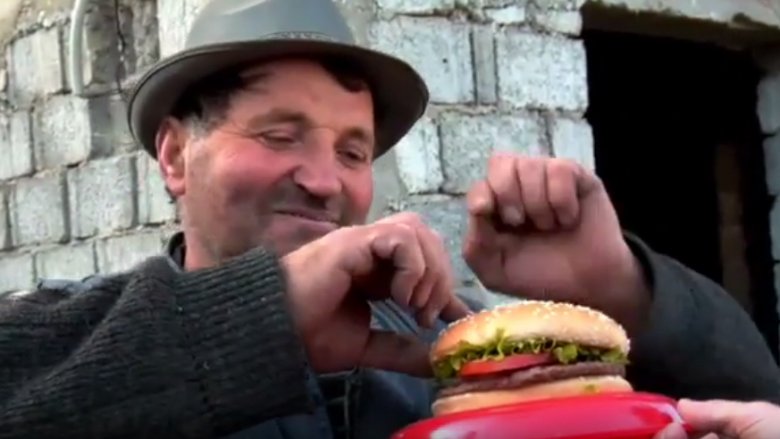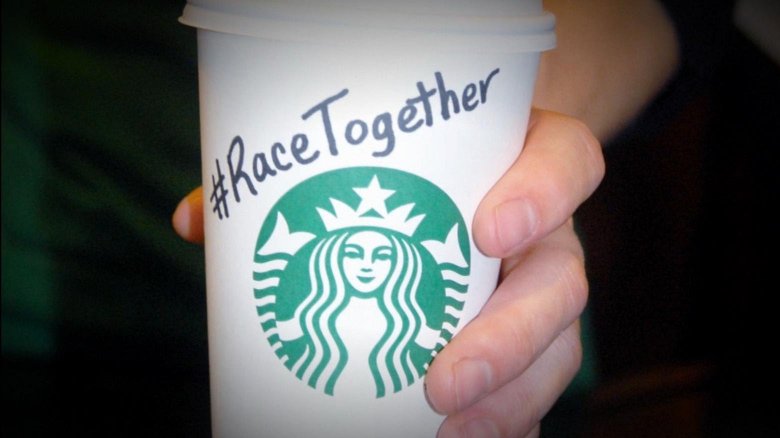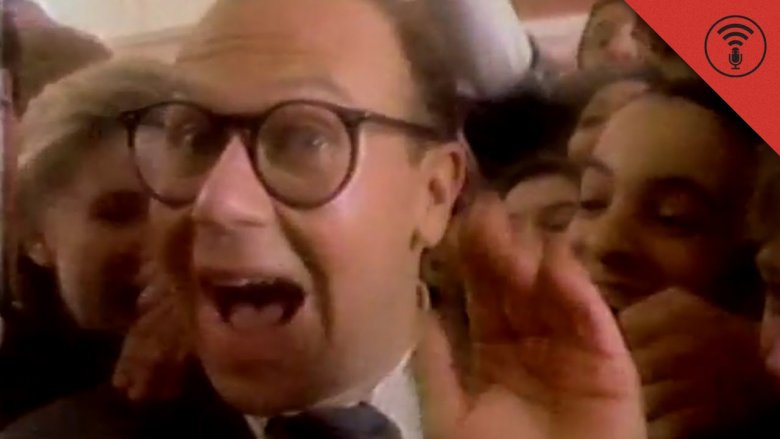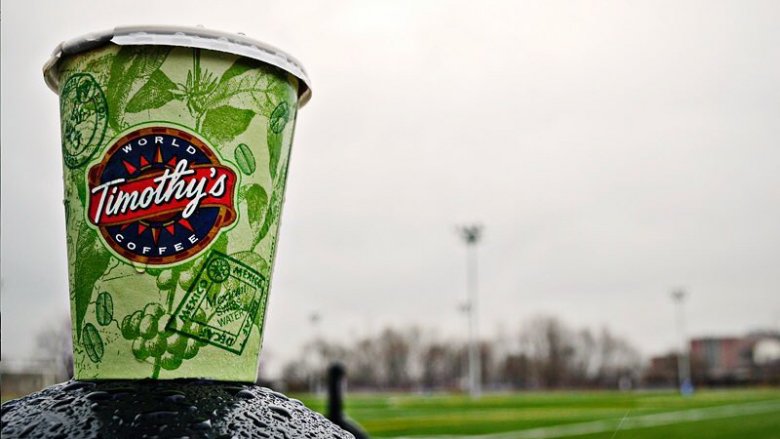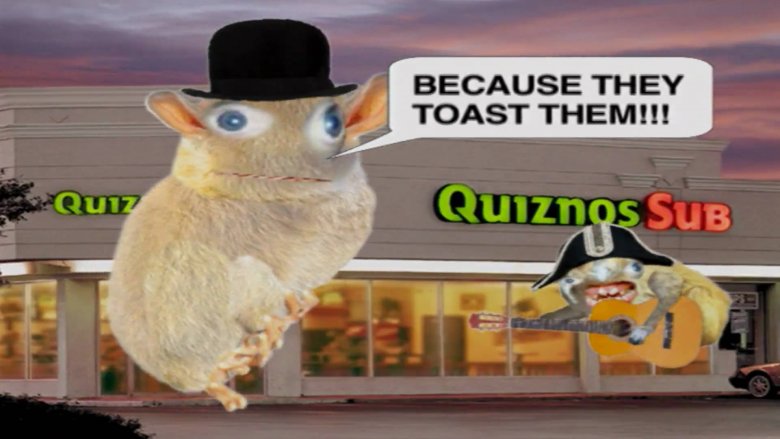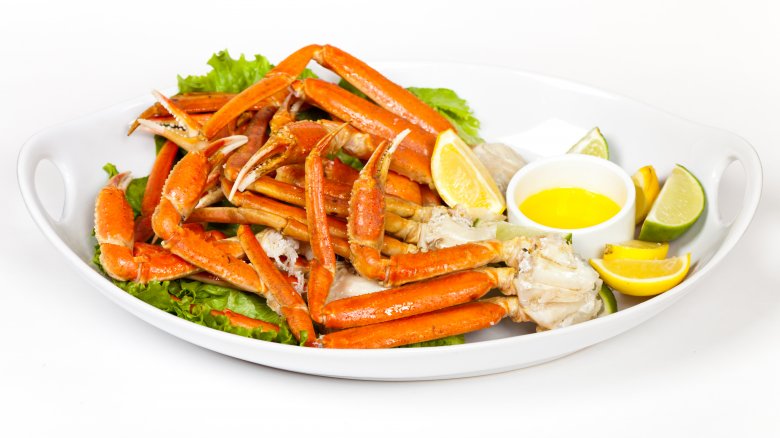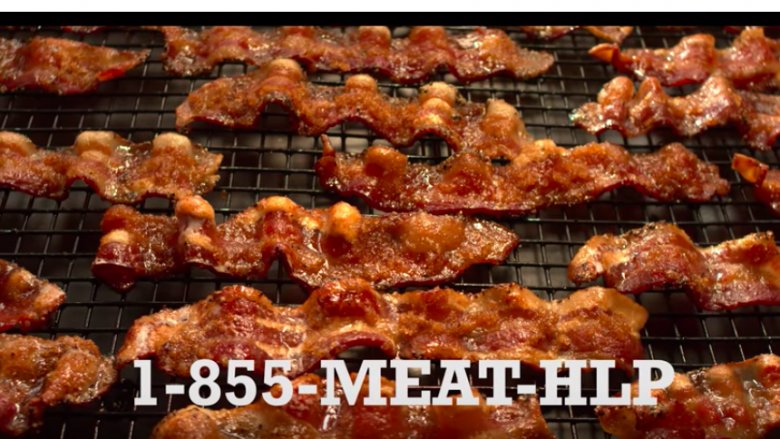Restaurant Marketing Campaigns That Totally Backfired
Restaurant marketing must be a tough job. One day you're celebrating because the fresh new ad campaign you conceived, featuring the latest hot pop star, had your company selling more french fries than it has in the past ten years. The next day, you green light a campaign by that avant-garde video artist who is all the rage in Europe, and manage to offend almost everyone in the Western hemisphere.
While there certainly have been some mega successful restaurant marketing campaigns in recent history — some creating taglines and mascots that have been beloved for generations — there are still many that belong firmly in the list of absolute marketing fails. Think you know which of your favorites fall on which list? Let's review the highlights (or lowlights) of some of the biggest restaurant marketing fails of all time. Some of them even got the big boss booted from the office.
McDonald's walk down memory lane
There is nothing like a national tragedy to get you all tasted up for a quarter pounder with cheese — am I right? That's clearly what was going through the mind of someone at the marketing department of McDonald's when they decided to green light the 2015 television advertisement that referenced 9/11, the Boston Marathon bombing, and other tragic events.
Aired during the NFL playoffs and Golden Globes, the ad was meant to show the company's connection to its communities by airing images of real restaurant signage that was displayed in solidarity after those tragic events occurred. While some viewers may have been touched by the sentimentality of the ad, whose soundtrack included a children's choir singing "Carry On," many in the media were quick to rail against it, with The Washington Post's Wonkblog calling it "tone-deaf" and "mushy corporate propaganda." Twitter users came through with their reliable snark, with one tweeting, "Remember when all those people died? Here, buy a Happy Meal!"
Said a McDonald's spokeswoman, "We've seen some strong praise and some negative comments. We expect that, and we welcome it. We'll continue to challenge ourselves to push boundaries in connecting with our customers." Not surprisingly, the original ad is no longer available on YouTube, but you can see a reimagined version of it here.
These burgers were too hot
Carl's Jr.'s (aka Hardee's) controversial television ads didn't begin with Paris Hilton's 2005 appearance, but it was the beginning of what has since been affectionately referred to as Carl's Jr.'s "Slutburger" campaign — advertisements that feature scantily clad models, actresses, and reality show stars, lasciviously devouring enormous Carl's Jr. burgers.
The ads became the fast food chain's trademark for a while, until the public decided they were just over them. Independent copy-testing firm, Ameritest, found in 2015 that 51 percent of those surveyed found the ads to be "irritating and annoying." Carl's Jr. fired back that the study was "not consistent" with the company's own sales results, adding that a SuperBowl ad for the All-Natural Burger, featuring a seemingly-naked Charlotte McKinney, had caused the burger to reach a new high in sales figures. According to Sean Scott of Ameritest, the results were likely due to the dollar coupon the chain was offering during the campaign, rather than the bikini-donned model.
Fast forward to 2017, when Carl's Jr. made a swift break from the saucy campaign, releasing a tongue-in-cheek ad featuring Carl Sr. booting the frat-boy, Carl Jr., out of the head office. The move coincided with a new CEO, and the company's desire to appeal to more than just the "hungry boy," 18-34 year old demographic, aiming for a wider client base and a more upscale product that could compete with chains like Five Guys or In-N-Out.
#notlovinit
Back in 2012, McDonald's sought to jump into the crowd sourcing wave, and stir up some Twitter love on social media. Creating the hashtag, #McDStories, McDonald's undoubtedly planned to be regaled with McDonald's nostalgia and heartwarming tales of broken families bonding over their mutual love of a cheeseburger Happy Meal. What they got instead were a slew of hashtags turned "bashtags," as Forbes dubbed them, shared not only by consumers, but also former employees who were all too eager to share their most horrific stories of working under the golden arches.
Forbes and the LA Times reported that the McDonald's campaign included promoting the hashtag on the Twitter homepage — a move they reversed a mere two hours into the tweet-filled melee. But it's not too easy to kill a hashtag, as McDonald's discovered when it was still being used to bash the company years afterwards. Some of the snarkiest of the bashtags included sightings of rats in restaurants, McDonald's-induced vomiting, dirty band-aids in sandwiches, and one user who declared, "One time I walked into McDonalds and I could smell Type 2 diabetes floating in the air and I threw up. #McDStories"
The campaign made it to many of the "worst" lists for social media blunders of 2012, and has become a lesson in the industry for what not to do in a social media campaign.
Domino's wishes they had avoided this...
If you had working eyeballs anytime during the late 1980s, you no doubt remember Domino's mascot, "The Noid." A play on the word "annoyed," The Noid was a bizarre little claymation man, wearing a form fitting, rabbit-eared onesie, whose sole purpose was to thwart the delivery of fresh-from-the-oven pizza pies. Only Domino's could help you to "avoid the Noid," along with his high-pitched cackle and arsenal of Batcave-worthy contraptions, and get you a hot pizza in 30 minutes or less.
The Noid captured the 80s' pop-culture-fueled spirit, and appeared not only in a slew of advertisements, but also in his own merchandise, video games, episodes of popular television shows, and a Michael Jackson video. But tragedy struck in 1989, when a 22-year-old man, named Kenneth Lamar Noid, held two Domino's employees hostage at gunpoint, in an Atlanta, Georgia Domino's location. The real Noid, who suffered from schizophrenia, believed the character was based on him and had been created to antagonize him. Noid demanded the hostages make him pizzas, and attempted to score $100,000 (plus a getaway car and a novel about Freemasons) before the hostages were able to escape and Noid was apprehended. The next day's headline in the Boca Raton News pretty much cemented the future of the mascot: "Domino's Hostages Couldn't Avoid the Noid This Time."
Noid spent several months in a mental institution, and committed suicide in 1995. The Noid campaign was quickly dropped by Domino's after his death, though the pizza-squashing gremlin did make a return appearance in 2011, to celebrate his 25th anniversary with the company.
McDonald's for the gold
The organizers of the 1984 Olympic Games in Los Angeles, California, hatched a brilliant business plan for turning the Olympics into a profitable venture — bringing in corporate sponsors. Companies like Coke and M&M quickly joined the commercial team, along with McDonald's, who created a marketing plan that would engage their consumers in the games from the comfort of their own couches.
The "When the US Wins You Win" game was a scratch-off card that customers received with every McDonald's purchase. If the US Olympic team scored a medal in the specific event on your scratcher, you won a small soda for a bronze medal, regular-sized fries for a silver medal, and a mighty Big Mac for a gold. If the marketing department at McD's was basing their campaign off of numbers projected from the 1976 summer games, they were looking for the US to score somewhere in the ballpark of 34 gold medals. But they had overlooked one crucial element. The Soviet Union was boycotting the games, and the lack of not only Russians, but also North Koreans and East Germans attending the games meant that the US swept events like gymnastics, table tennis, and swimming. The New York Times called the number of Big Macs given away "mindboggling," with some locations running out of Big Macs. While McDonald's never officially disclosed how much of a hit they took on the campaign, the marketing-fail was remembered for decades, even getting its own parody on The Simpsons.
Burger virgins
When considering the tale of how the one-time King of Burgers dropped to number three in the fast-food rankings, it's difficult to zero in on any one marketing snafu. Was it the use of the polarizing King mascot, whom Ad Age described as having a "death mask of a grin, like something out of a John Carpenter movie"? Perhaps. But it was the ad campaign that offended folks of practically every race, culture, and creed that may have really dethroned the one-time King.
In 2008, the Whopper Virgins campaign saw the fast-food giant traveling to remote areas of the globe like Transylvania and Greenland to find burger "virgins" to taste-test Whoppers and Big Macs. "They didn't even quite know how to pick it up," the campaign boasted. Critics pointed out that many of these areas suffered from poverty, and AdWeek commented, it's "embarrassing and emblematic of how ignorant Americans still seem to the rest of the world."
Sales began to decline in 2009, with a number of Burger King stores closing shop. One franchisee told AdAge, "We've been impacted because of marketing faux pas."
When Starbucks ended racial divide
In 2015, Starbucks CEO, Howard Schultz, decided to tackle social issues in the US by launching a rather unusual marketing campaign. In a video message, Schultz urged his "partners" (Starbucks speak for "employees"), to go one step beyond ridiculously misspelling customers' names on cups, and asked them to also include the handwritten phrase, "Race Together." The company's intention was to "facilitate a conversation" with your 17-year-old barista about racial tension in the US while you enjoyed your daily half-caf, venti vanilla latte. Starbucks even went so far as to partner with USA Today, publishing an eight-page supplement with "conversation starters" on the topic, like asking how many friends or co-workers people have of a different race.
Perhaps unsurprisingly, the general public didn't respond warmly to a white billionaire preaching to them about race relations. The campaign was quickly made fodder for magazine editorials and late-night talk shows. Schultz himself admits the misstep the company may have taken in the campaign, but didn't back down from his overall intent to take on "a number of issues that, for the most part, were absolutely untouchable for a company, let alone for a company as ubiquitous as Starbucks."
Who's Herb?
Dubbed "one of the most notorious fails in marketing history" by The New York Times, we have Burger King's "Where's Herb?" campaign. Hoping to create a beloved, real-life mascot akin to Wendy's popular Clara, who famously exhorted "Where's the Beef?", Burger King gave us Herb.
Months of ads mysteriously devoid of this "Herb" fellow foreshadowed a mysterious man whose family and friends spoke of his many peculiarities — none so peculiar as his never having eaten a Whopper. Our first glimpse of Herb was during a blow-out, Super Bowl Sunday ad spot. What we got was a nerdy, bespectacled man, whose ho-hum admission that he now loved Whoppers failed to capture the zeitgeist that Burger King was after. But America was after the daily $5,000 in cash that Burger King offered for consumers who could be first to spot the real-life Herb, who was touring around the nation's restaurants during the lunch time rush.
Scandal ensued when young teens were cutting school to spot Herb at their local Burger King. One family filed a law suit when the actor playing Herb was spotted by their 15-year-old son, but the award was then given to his older friend. By May of 1985, Burger King had dropped the Herb campaign, with company President, Jay Darling, admitting that the campaign had not worked as well as they had anticipated.
Timothy's Facebook fiasco
Timothy's Coffees decided in late 2011 that they wanted to ramp up their amount of Facebook "likes" as they headed into the New Year. And what better way to do that than to offer its consumers the thing that consumers like best — free stuff? Timothy's promised that for every new "like" they received, the Facebook user would receive four boxes of Timothy's K-Cups. But Timothy's grossly underestimated the number of "likes" they would receive, especially after the deal went viral, and was featured on many forums that share deals and freebies with bargain-seekers. Making matters worse, a technical glitch sent an email to all the folks who had submitted their info, promising that their coffee would indeed be on its way. Timothy's waited until January 4, 2012, to clarify that the offer was "first come, first served," and took more than another full week to issue a video apology. The resolution for those not receiving the K-Cups? A coupon for a free box of coffee, to be redeemed in stores.
Paul Cubbon, who teaches marketing at the University of British Columbia, told The Star that the apology came way too late. "With social media you need to respond in hours, not days and weeks. A month is glacial."
Quizno's spokesthings
Once upon a time, an artist who worked with Britain's Channel 4 created these bizarre little creatures that looked part marmoset, part gerbil, had bad teeth and and wore curious hats. The creatures sang warbly songs extolling the virtues of the moon, cheese, zeppelins, and furry animals. They were called spongmonkeys, and naturally somebody at Quizno's thought they would be the perfect mascot to sell Americans toasted sandwiches.
The public had a love/hate reaction to the ad's "spokesthings," as Quizno's referred to them. The company's main switchboard received 30,000 phone calls in the week of February 2004 that the odd creatures first screeched their love of "the subs" to the American public. Nobody hated the spongmonkeys more than franchisees, with one in Mobile, Alabama posting a sign on his door that he had nothing to do with the marketing campaign. While the company wouldn't disclose what the campaign had done to sales figures, they quickly dialed back on the spongmonkey campaign, shifting to a focus on "real product benefits."
Red Lobster's all-you-can-eat disaster
How many crab legs could you eat in one sitting? If you're anything like the customers who bought into Red Lobster's "Endless Crab" promotion back in 2003, the answer is likely: a lot more than the company bargained for. The company's president, Edna Morris, was banking on the success she'd had on all-you-can-eat promos at her previous gig for a family steak chain. The problem was, beef is a lot more filling than crab, and Red Lobster customers were reaching for third and even fourth helpings of the pricey ocean delicacy, at the low low price of just $22.99 per person.
To make matters worse, wholesale prices of crab legs skyrocketed that year, which further contributed to the then-parent company, Darden, losing 3.3 million in first-quarter profits compared to the year before. Morris was relieved of her presidential position, and Red Lobster was eventually sold to a private equity firm, who offers fewer discounts and more freshly prepared foods. Don't worry, the cheddar biscuits aren't going anywhere.
Arby's sticks it to vegans
It must be challenging for fast-food giants to keep up with all of the food restrictions potential consumers abide by, but let's face it — vegetarianism is hardly a new fad. That's why it was something of a head scratcher in 2015 that Arby's would take aim at the vegetarians of the world with their downright rude, 1-855-MEAT-HLP ads, which offered an actual help line to assist vegetarians who simply couldn't resist Arby's new brown sugar bacon.
Len Torine of The American Vegetarian Association told The Daily News that he believed most vegetarians and vegans would take a hard pass, "I sincerely doubt they are going to sway any of the purists," he said. A couple of devoted vegans even filmed themselves as they called the hotline to see what "help" was being offered to them, and were dismayed when the voice on the other end told them to take a breath, and eat a salad.
While Arby's brown sugar bacon was only available for a limited time, Arby's stuck the steak knife in a little further in 2016 with their vegetarian-friendly "bread sandwich." Said Arby's President, Rob Lynch, "... We've decided to give vegetarians a reason to visit Arby's on Leap Day by offering a one-day menu designed specifically for them. If it goes well, we'll likely bring back the vegetarian menu on Feb. 29 each year."
